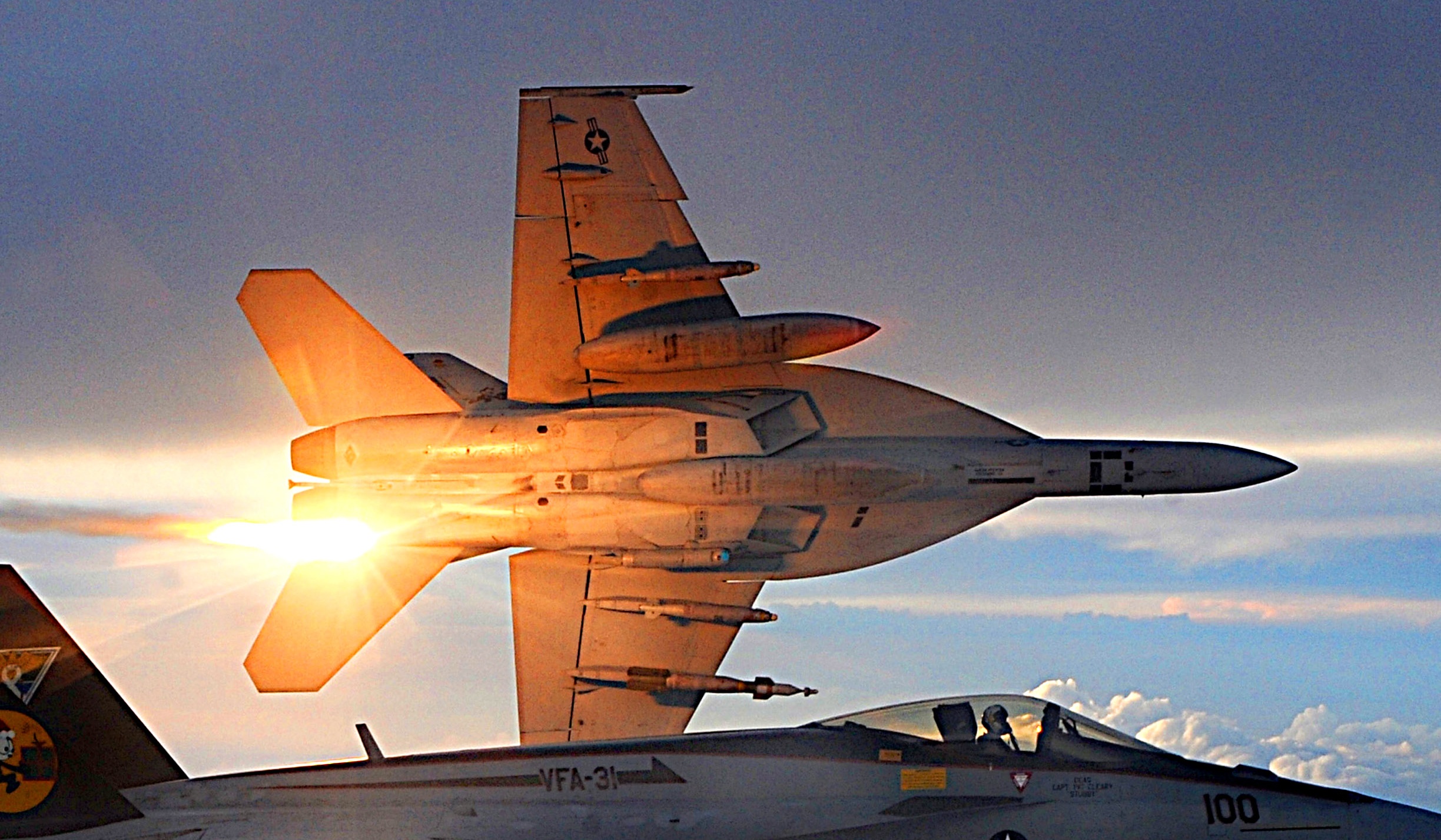We're open daily! View holiday hours
Science News
The Green Hornet
April 21, 2010

The Green Hornet, a Navy F/A-18 jet, will take off from Chesapeake Bay on Earth Day as a symbol of green technology and the future of the Navy.
The twin-engine tactical aircraft will make a supersonic flight with 50% biofuel in its tanks. The fuel is derived from the crushed seeds of the Camelina sativa planet, a relative of canola and a member of the same plant family as mustard.
The flight will represent a milestone in the Navy’s efforts to reduce its reliance on petroleum. It will showcase Pentagon efforts to increase renewable energy—in part to protect the military from energy price fluctuations and dependence on foreign oil. As naval aviation’s biggest fuel consumer, the F/A-18 Hornet is a fitting test aircraft.
Secretary of Navy Ray Mabus has set a target for half of naval energy consumption to come from alternative sources by 2020. Proposals include a “Great Green Fleet” to sail by 2016 that will comprise nuclear ships, as well as surface combatants using hybrid electric power systems.
Many hurdles had to be overcome for the F/A-18 to take off on Thursday. For example, fighter jets’ engines rely on petroleum fuels to make their engine seals swell, thereby preventing leaks. Because biofuels don’t provide this capability, they had to be mixed with petroleum products.
That enabled it to meet the primary goal of Rick Kamin, the civilian who leads the Navy’s fuel program. Kamin wanted a fuel that “requires no modification to the aircraft… these fuels have to be invisible to the operator.”
Sustainable Oils of Seattle won the Pentagon contract by meeting Kamin’s criterion. They created a fuel from Camelina sativa oil that very much resembles the jet fuel JP-5. It even has the same energy density, which means that it delivers the same power and is read the same way by the aircraft’s fuel gauge.
Sustainable Oils selected Camelina because it has large numbers of seeds with high oil contents. It is cold tolerant, needs little water or fertilizer, and can be rotated on fields that farmers let lay fallow between wheat crops. “We wanted a crop that didn’t compete with food,” says CEO Tom Todaro.
Pentagon approval of their fuel has helped Sustainable Oils make headway into other markets. It recently signed a memorandum of understanding with 14 airlines to negotiate the purchase of up to 750 million gallons of renewable jet fuel and diesel—that’s about 10% of the petroleum fuel consumed annually at Seattle-Tacoma International Airport.
The next stop for Sustainable Oils is a fuel revolution for the ground-based and marine transportations industries. Those should be relatively easy, according to Sustainable Oils’ Todaro who said “we chose jet fuel to start because it’s the hardest. We wanted to show it could be done.”
Scientists at Michigan Technical University reported that a Camelina-derived jet fuel would produce 84% lower carbon emissions than petroleum fuel. Happy Earth Day, indeed.